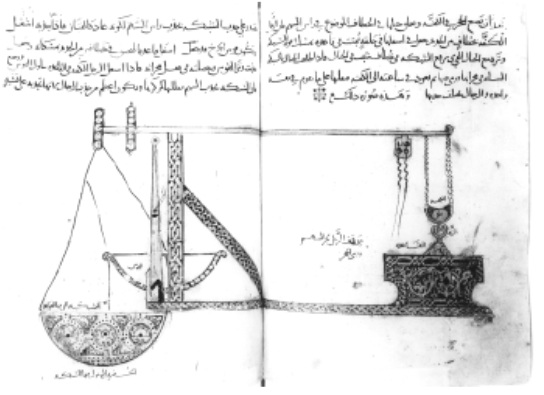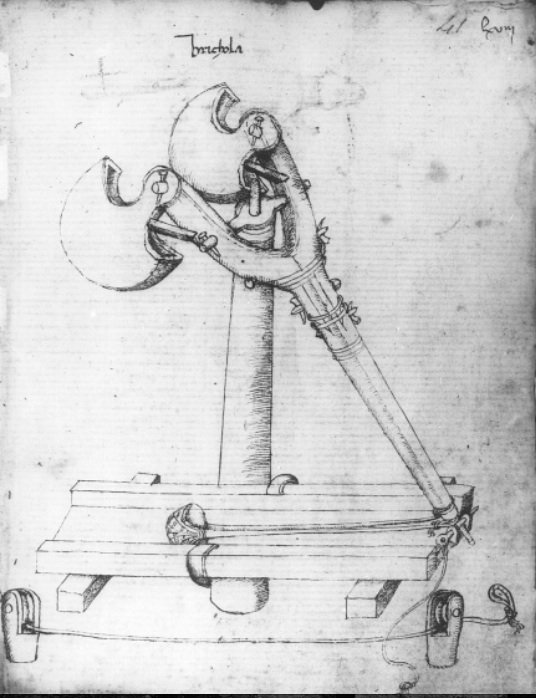“The first man who fenced in an area and said ‘this is mine’, and found people simple enough to believe him, was the real founder of civil society.” -Rousseau
In examining the trebuchet’s impact on global cultures, we must first define what exactly a “culture” is. Ian Hodder’s Symbols in Action defines cultures in a material sense, as “geographical areas with recurring associations of artifacts,” denying the relevance of ethnic distinctions to the formation of distinct cultures. Symbols in Action also summarizes the views of several other archaeologists on the subject. Crawford defines a culture as “the sum of all the ideals and activities and material which characterise a group of human beings,” while Childe states “culture is the durable material expression of an adaptation to an environment, human as well as physiological,” continuing that the prevalence of an artifact type signifies its social success. Childe also mentions the environment’s effect on cultures, as the material items, he claims, are “devices evolved to meet needs evoked by particular conditions.” Finally, summing up these views of culture, White, in 1949, called it “man’s extrasomatic means of adaptation”
From these definitions, we might infer that spatial patterning of material culture would reflect degrees of social interaction: friendly societies would share artifacts and with them, culture, while social boundaries would hinder the movement of objects. Hodder comments that “in conditions of marked competitions for resources, cultural discontinuities relate to the boundaries of ethnic groups.” Furthermore, he points out that not only do cultural gaps serve as indicators of rival societies- they can also help to create rivalries. In his view, a different material culture becomes a “them” and thus justifies “us” in stealing from and harming “them” and in this way, he claims, “material culture of many forms is used to justify between-group negative reciprocity.” This negative reciprocity can then take on characteristics of ethnic conflict, Hodder adds; he asserts that artifacts both “reinforce ethnic distinctions,” and “act to make ethnic competition…acceptable.” In a more global sense, Hodder’s analysis of material culture is summed up in his statement that “Symbols can actively justify the actions and intentions of human groups.”

Tarusi's counterweight trebuchet, the earliest extant illustration of a gravity-powered trebuchet, dating from ca. 1187
A study of the trebuchet’s spread, from China, through the Middle East and the Byzantine Empire, ending in Western Europe, is highly pertinent to Hodder’s ideas of material cultures. The trebuchet, as a symbol, undoubtedly justified the violent actions of many groups, and unquestionably with this it reinforced ethnic distinctions. However, with its rapid spread through conflicting societies the trebuchet defies the notion that social boundaries hinder the spread of material culture, and in this aspect, the spread of the trebuchet throughout the Eurasian landmass presents the trebuchet as an engine of globalization through conflict.

A 1433 Italian sketch of a hinged, propped, 2-counterweight trebuchet, called a bricola
The late 11th century was a time of great conflict is the eastern Mediterranean: “The Byzantine Empire, Western European crusaders, and the sultanate of the Great Seljuqs, joined by their dependents and local Atabeg dynasties, all contended for power.” This increased military activity was most likely the driving force behind the development and rapid spread of the counterweight trebuchet. Chevedden, in his Dumbarton Oaks paper, claims the trebuchet is a collective achievement of the civilizations of China, Islam, Byzantium, and Western Europe, and calls it “one of the greatest products of multiculturalism in the field of technology”
Viewing the trebuchet as a product of multiculturalism brings about the question of how the rival societies of China, Islam, Byzantium, and Western Europe collaborated to create this piece of technology. Several short case studies illustrate the types of interactions which were able to spread and advance the technology of the trebuchet.
First is an account of the Mongol Empire’s use of the trebuchet, a tool instrumental to their rapid spread. According to Chevedden’s Scientific American article, the Mongols employed Chinese and Muslim engineers to build and operate their trebuchets, demonstrating a civil exchange of technologies. Interestingly, the Mongol use of the trebuchet contributed to the spread of another global trend, the Black Death: in their 1345 siege of Kaffa in Crimea, Black Death infected the Mongol ranks. The Mongols used their trebuchets to continuously hurl the bodies of the dead over the city’s walls, eventually infecting and conquering the city. Unfortunately, the disease spread from Crimea to the Mediterranean ports of Europe, another profound and unforseen impact of the trebuchet’s powerful technology.
A second narrative, telling of the Slavs’ acquisition of the trebuchet, illustrates another method of the spread of this knowledge: “They first obtained this technology through a captured Byzantine soldier named Bousas. In exchange for his life, Bousas constructed for the Avaro-Slavs a missile-throwing siege machine referred to as a helepolis (city- taker), which was instrumental in capturing the fortress of Appiareiain Moesia Inferior (in northern Bulgaria) in 587” (Chevedden). Bosuas’ surrender of his knowledge shows us the ease with which this information could be passed, leading to a rapid spread of the technology. In addition, the ability of a common soldier to pass on all the necessary instruction to build a trebuchet and conduct a successful siege demonstrates the simplicity of trebuchet design and operation, another factor which allowed its rapid spread.
A third account of the 1124 siege of Tyre, also from Chevedden, shows the great value of the trebuchet’s technology, and again demonstrates the ease with which this information could be passed on and implemented: “William of Tyre’s account of the siege mentions that the crusaders sent to Antioch for an Armenian artillery expert named Havedic, who came to Tyre and “displayed so much skill in directing the machines and hurling the great stone missiles that whatever was assigned to him as a target was at once destroyed without difficulty.” With the aid of this Armenian specialist and his battery of artillery, the siege “assumed the aspect of a new war in the eyes of the Tyrians.” The crusaders pressed the siege with renewed strength, and the city was forced to surrender on 7 July 1124.”
Observing the spread and evolution of the trebuchet through multiple societies, it becomes evident that this thing was more than a siege machine. The simplicity of the trebuchet facilitated its transmission between both allies and enemies, as seen in the case studies above. In addition, the trebuchet’s awesome power- and its ability to literally break down barriers, ensuring victories and advancement for those who possessed it- provided the driving force behind this technology’s rapid dispersion. With its diffusion throughout Eurasia, the trebuchet itself became a “product of multiculturalism,” modified and advanced by the societies of China, Islam, Byzantium, and Western Europe, and with this spread, the trebuchet was in turn incorporated into the material cultures of each of these societies. In its creation of a unified culture throughout Eurasia, the trebuchet acted as an engine of globalization. The trebuchet, in its time, crossed social boundaries, and through conflict, unified the material cultures of the major groups across Eurasia.
Conclusion: Globalization through Conflict
Back to The Catapult
